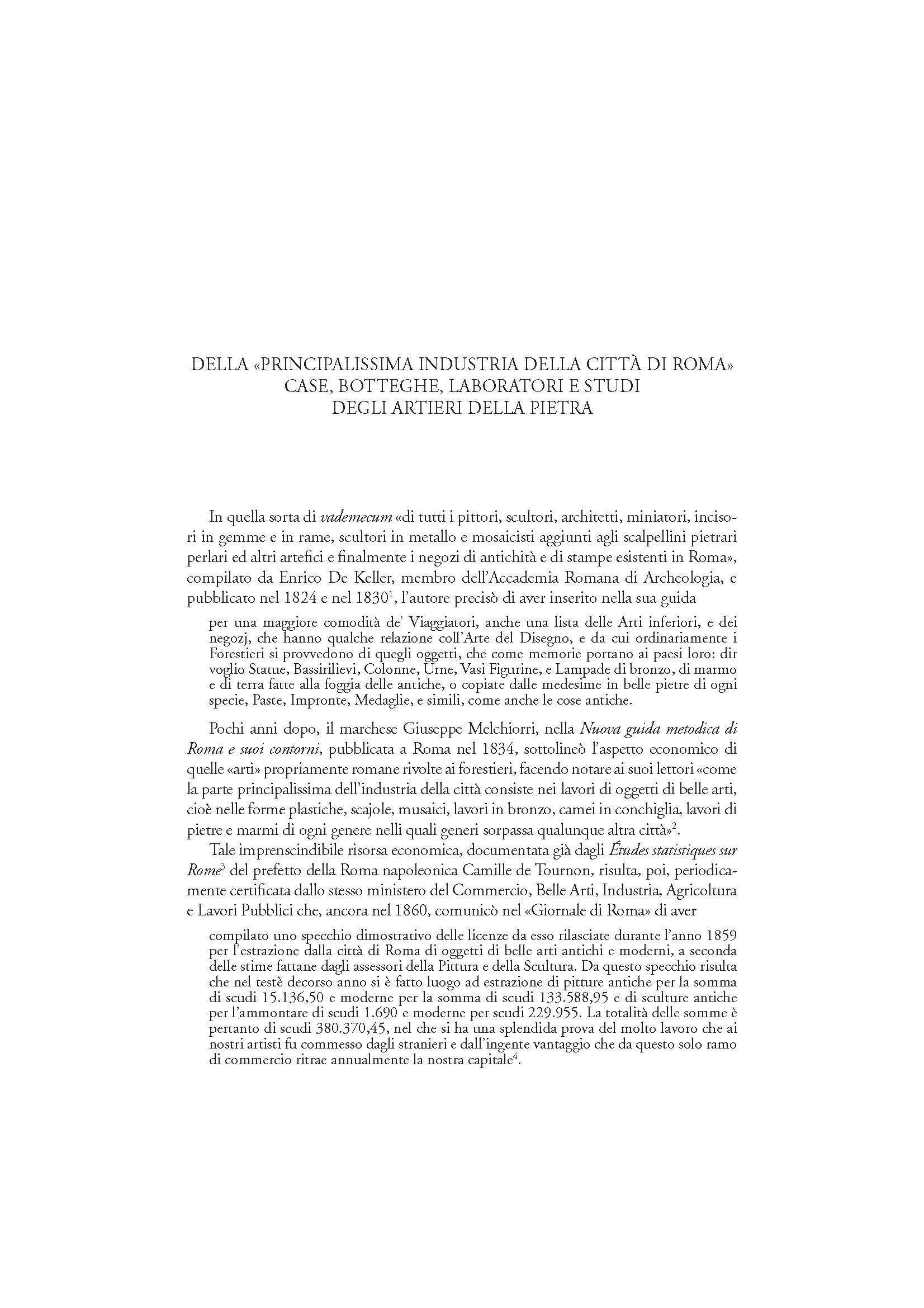Della «principalissima industria della città di Roma». Case, botteghe, laboratori e studi degli artieri della pietra
6,00 €
The study analyses the conditions of ownership and of use, the typological characteristics and the architectural transformation of a number of premises to be used for work, for commerce and for housing by three different artisans in stone. Francesco Sibillo (1784-1859), «pietraro» stone cutter, Filippo Albacini (1777-1858), sculptor and Tommaso Della Moda (?-1854), stone mason. The circumstances under which the three were, during the nineteenth century, to consolidate their activities in the area between piazza di Spagna, piazza del Popolo and the Tiber tell the story of the increasing artisan specialization of this part of Rome; an area favored both by the presence of many artists and foreign travelers entering the city through the Porta del Popolo and by the easy access to suppolies by means of the Tiber and the Port of Ripetta.
The study analyses the conditions of ownership and of use, the typological characteristics and the architectural transformation of a number of premises to be used for work, for commerce and for housing by three different artisans in stone. Francesco Sibillo (1784-1859), «pietraro» stone cutter, Filippo Albacini (1777-1858), sculptor and Tommaso Della Moda (?-1854), stone mason. The circumstances under which the three were, during the nineteenth century, to consolidate their activities in the area between piazza di Spagna, piazza del Popolo and the Tiber tell the story of the increasing artisan specialization of this part of Rome; an area favored both by the presence of many artists and foreign travelers entering the city through the Porta del Popolo and by the easy access to suppolies by means of the Tiber and the Port of Ripetta.

